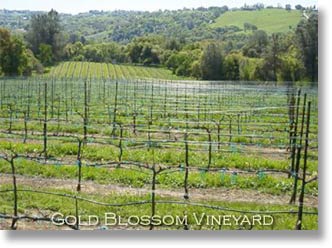 |
||||
|
.. Sierra
Foothills By
Michael Abbott, Winemaker Do you wonder why most
California wines are named for their
primary grape variety, while most European
wines are named for their place of origin?
It's because U.S. wine drinkers and
marketers have associated wine quality
with particular grape varieties (like
Cabernet Sauvignon) since Prohibition
ended. More recently, we have started
giving due recognition to the fact that in
wine, as in real estate, location is
critically important. The Europeans have
been at this winemaking business longer
than we have, and they understand the
importance of growing grape varieties in
their ideal settings. This concept of
terroir teaches us that the place is the
thing, so read on and find out why our
unique location makes our wines
special. The Sierra Nevada mountains
form a wall running the length of
California along the state's eastern edge.
Over eons, Pacific storms dropped their
precipitation on the western slopes of the
Sierras, eroding that side to form
piedmonts, or alluvial fans. What this
geo-history means for wine aficionados is
that US label authorities have recognized
the unique character of wines from the
region and designated it as the Sierra
Foothills AVA (American Viticultural
Area). Wine grape varieties and
wine styles from this region vary
considerably depending on the elevation of
the vineyard location. At higher
elevations, say over 1,500 feet, where
many El Dorado and Nevada County vineyards
lie, the weather is cool, there is more
rain and some snow, and less topsoil.
Wines from these districts generally have
more acid, less alcohol, less body, and
more delicate aromatics in the nose. By
contrast, below 600 feet is technically
the Central Valley, not the Sierra
Foothills. To see for yourself the
difference that terroir makes, taste a
Lodi Syrah and a Nevada County Syrah side
by side. Between 600 feet and 1,500
feet is the historic band of Sierra
Foothills wine growing. Settlers drawn by
the Gold Rush recognized the Mediterranean
climate of the region and planted
vineyards and olive trees as they had in
their native lands. Now a century and a
half later, our wine growing experience
has affirmed that the Sierra Foothills
environment, with its decomposed granite
soils, and warm days relieved by cool
nights, is ideal for grape varieties such
as Syrah, Zinfandel and Sauvignon Blanc.
Here the wines tend to be more dense and
full-flavored than many of their high
country relatives, more deeply colored,
and given to riper aromas. In comparison
with their neighbors from Lodi or the
Sacramento River Delta, Sierra Foothills
wines often show more complexity and
flavor dimensions, and a firmer structure.
To add another dimension to your terroir
tasting, include a Syrah from Placer or
Amador County with its high country and
valley counterparts. You will taste
noticeable differences, and in the
pleasurable process you'll hone your wine
tasting skills. |
Interested in a linked listing,
mini-web page, coupon or
sponsoring a category or page email
us for information
and rates.
Home | Hwy 49 Map | Cities Directory | Business Directory | Bed & Breakfast | Golf Courses | Wineries | Historic Churches
Gold Rush History | Historic Photo Gallery | Gold Facts | We The People | Ghosts | General Store | Old Sac | Tahoe | Yosemite
historichwy49.com
Since 1999
© 2000,
2001, 2002, 2003, & 2004 historichwy49.com
e-mail: info@historichwy49.com
